Soya Curry

My paternal grandfather was a strict disciplinarian, a quality he picked up in the navy. He liked to wake up at 5am, do his exercises, take a shower, dress in his white shirt, dothi, and a freshly powdered face. He then would neatly chop up some fruits, arrange them on a plate, pick up his newspaper, put a carnatic music cassette in the player (so loud that the whole village could hear him,) and settle on the porch to read the paper, which at the end of his read would still look untouched! (My father is the exact opposite. After my father has finished reading the paper, halfway through an article, I’d be like “Hmm.. this does not make any sense,” and realise that the pages are all mixed up.) But, I digress.
Everything that my grandfather did was with a quiet precision. Even eating. Not a morsel would be left behind on a plate, not a morsel would be spilled on the table. It was honestly a delight watching him eat, enjoying each bite.
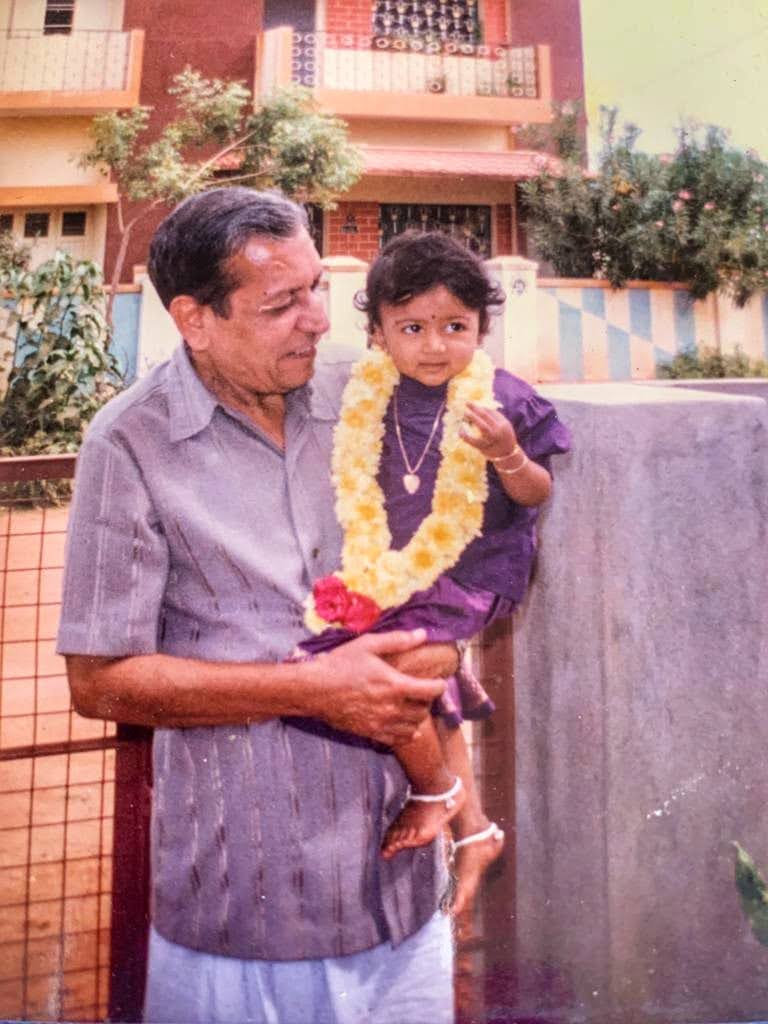
I remember watching him cut a guava thinking how his hand and knife moved so smoothly, like the knife was an extension of his hand. Since he didn’t really like the part with the seeds, he’d efficiently chop it off and give it to me, along with a lecture on the importance of fiber in food. As a kid, that was my problem. Him insisting that I maintain discipline in my life too. As an adult with OCD, my brain rejoices with the thought. In fact, there are many days I wish I could go back to his house in Palakkad just to follow him around the house, watch him go about his day, maybe even take some notes. But in those days, I’d find some reason or the other to run away from him and his lectures. It was also mainly the fear that he’d make me sit next to him and work out math problems during the Summer vacation. Hindsight really is 20/20.
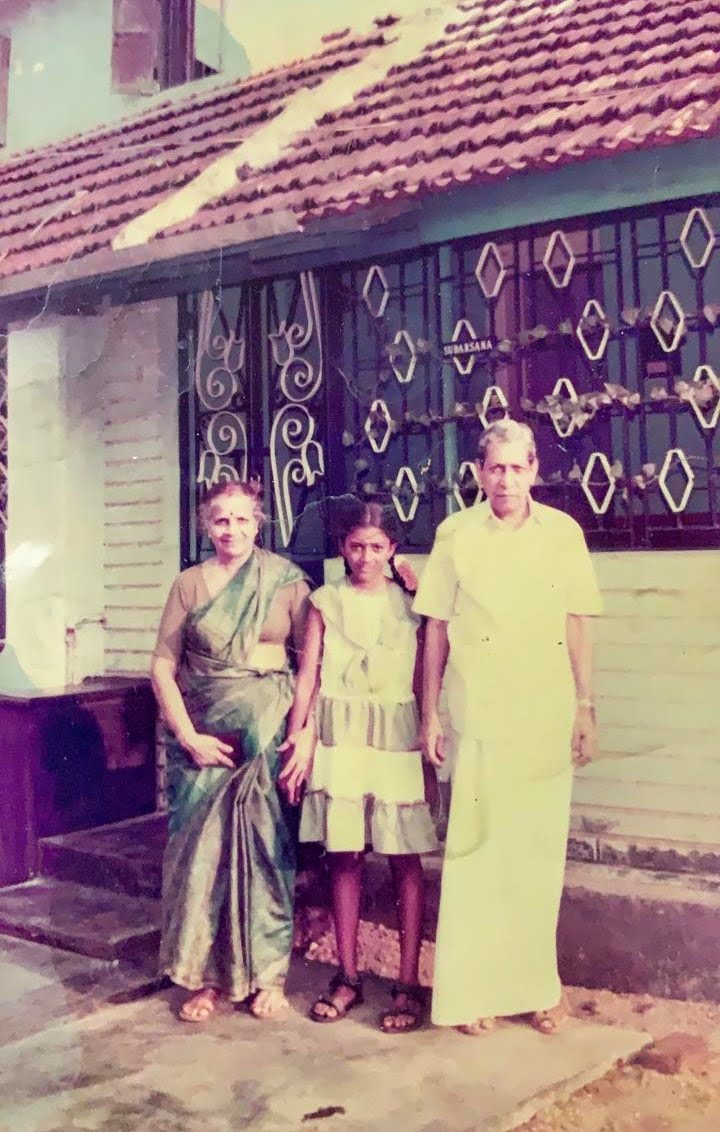
When I got older (and developed more patience,) I started following him, especially in the kitchen. One of the first meals that I remember watching him cook was with soya. I was actually peering into the pot in which he’d set the soya to boil and criticising.
“It smells so yucky!” I said with an air of authority. “I don’t know why you eat this everyday.”
“Because it is a great source of protein and more importantly, fiber. It’s like eating meat.”
“I eat meat. Then, I don’t have to eat soya,” I concluded, walking away feeling victorious.
Being a staunch vegetarian, he didn’t really approve of my meat eating choices, but he let my statement by and went back to seasoning his soya with turmeric and salt. That’s all he needed to enjoy his meal.
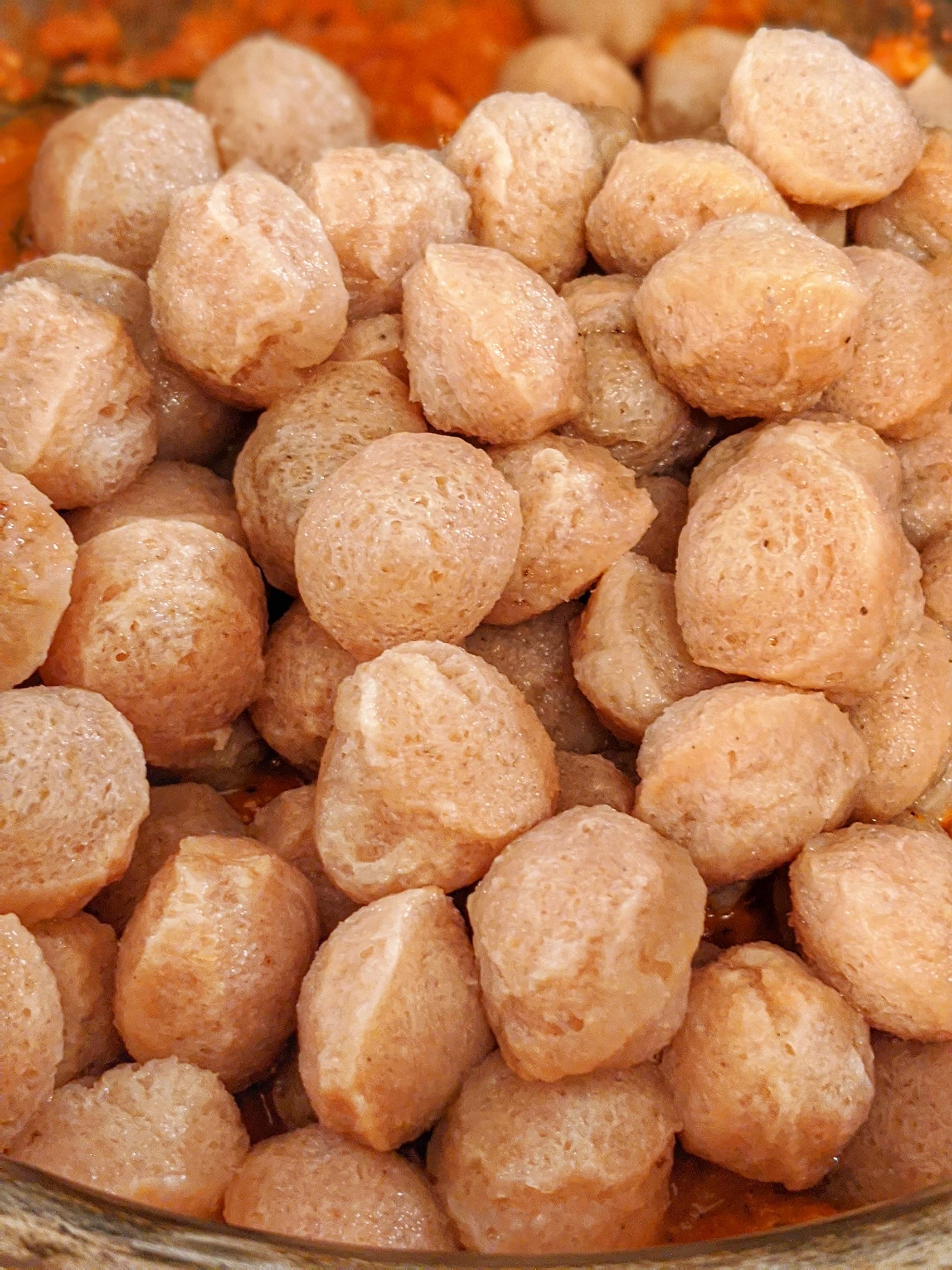
Of late, I’ve grown to love soya, largely because of Ni’s love for it. But I do need a lot more than just salt and turmeric to make it a staple in my house. Usually, I just make a simple onion-tomato base and pressure cook the soya with it, but since the soya by itself does not lend much of flavour, I was looking for something to help me add a bit of depth to the curry. This is a recipe adapted from sharmispassions. She blends the onions and tomatoes with a couple of tablespoons of shredded coconut. This, when pressure cooked, is easier for the soya to absorb. In fact, the first time I made this curry, my cooker was acting up and ended up cooking all the water away, leaving me with some delicious, spicy, tangy soya in a thick masala. I make that accident on purpose now.
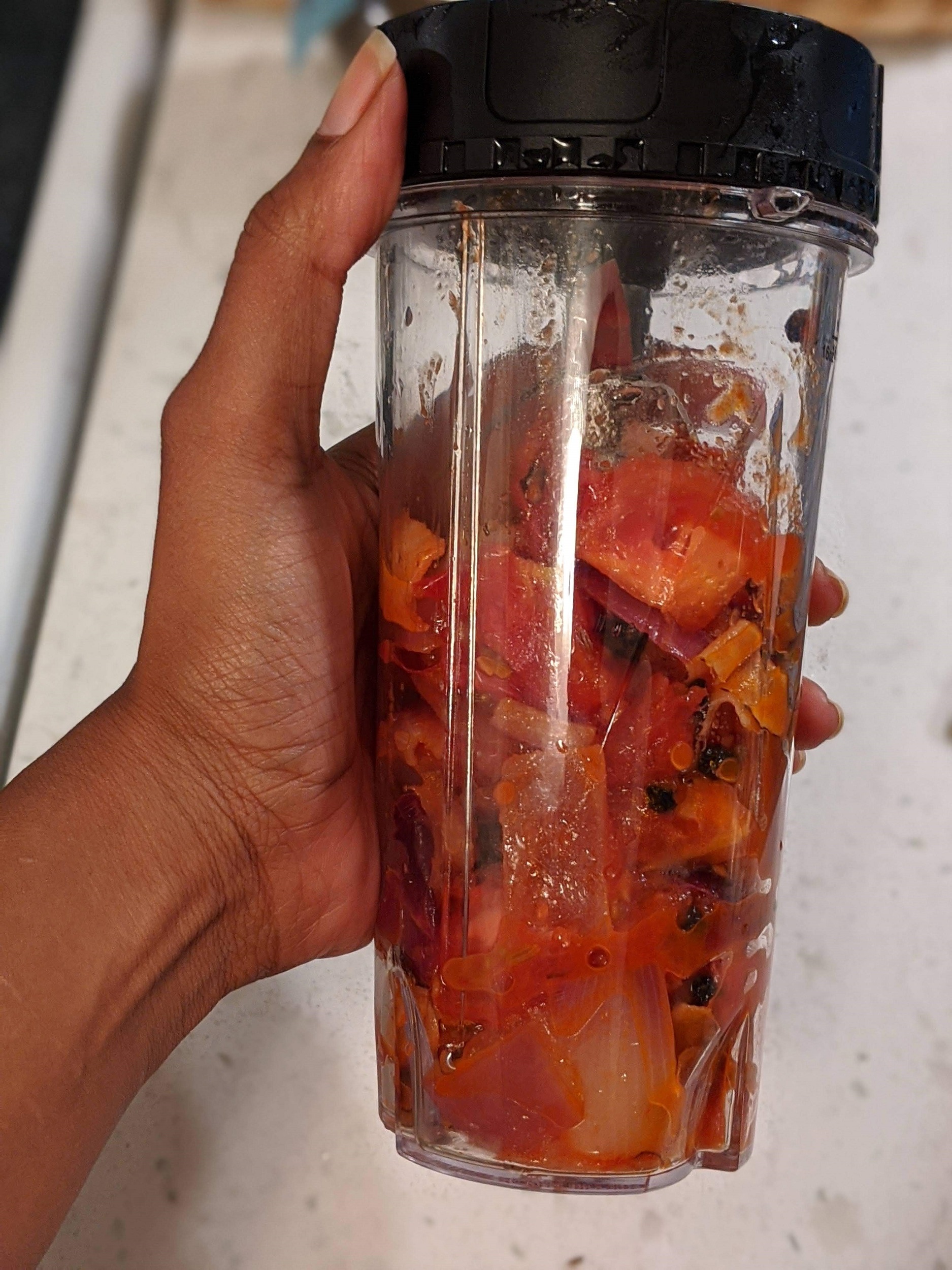
But before we start off with the base, the first step is to make sure that the raw smell of soya is boiled away. There are a lot of suggestions out there for boiling them with milk, but I follow my grandfather’s simple style of letting them rest in a saucepan of hot water and just rinsing them thoroughly. Let this sit in a colander and drain completely while you prepare the curry.
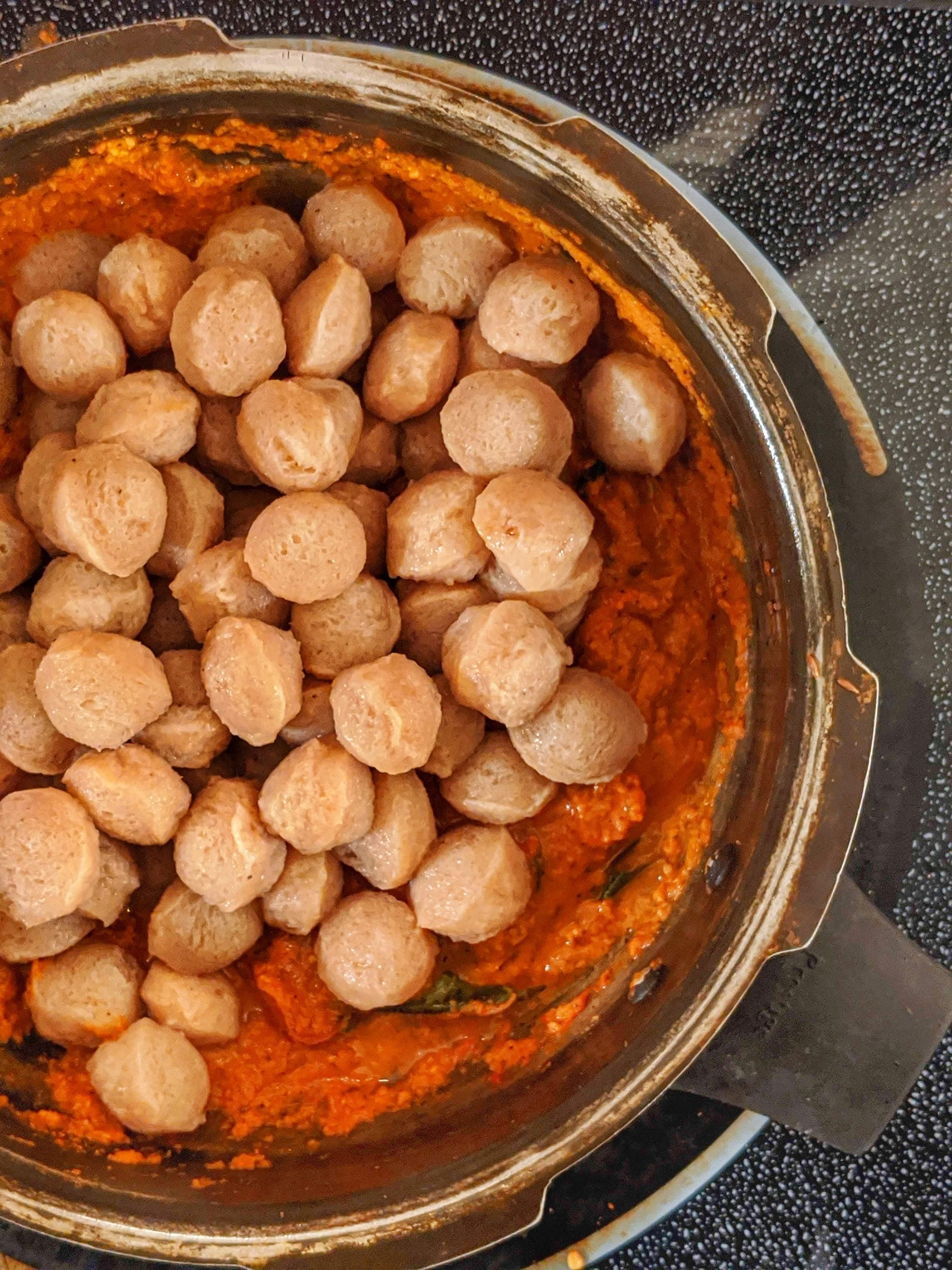
For the curry, start with a little oil in a hot pan. Add the onions and saute them until soft and translucent. Throw in the tomatoes and cook them for about five minutes while they become soft and mushy. Add the shredded coconut and saute until they become golden brown. Take the pan off heat and let it cool down completely before blending it into a paste with a teaspoon of fennel and half teaspoon of pepper.

Meanwhile, heat up the pressure cooker with a bit of oil. Temper with cumin seeds and curry leaves. Once they get crackling add some the onions and once again cook them down until they are soft and translucent. Add ginger-garlic paste and cook it out until the raw smell goes off. Pour in the freshly grinded onion-tomato-coconut base along with a teaspoon of turmeric, coriander, chilli powder, salt, and garam masala. Mix well, add the soya chunks and combine until they are all covered with masala. Add half a cup of water, check the taste, and pressure cook for one whistle.

Garnish with some fresh coriander and serve hot with chapatis.
Chunks of healthy soya in a spicy, tangy, onion-tomato-coconut gravy.
Bring a saucepan of water to boil. Switch off the heat and add the soya chunks. Let it sit for 10 minutes. Drain and rinse thoroughly. Let it sit in the colander while you prepare the curry.
Start with a little oil in a hot pan. Add the onions and sauté them until soft and translucent. Throw in the tomatoes and cook them for about five minutes while they become soft and mushy. Add the shredded coconut and sauté until they become golden brown.
Add the fennel seeds and pepper. Take the pan off heat and let it cool down completely before blending it into a paste.
Meanwhile, heat up the pressure cooker with a bit of oil. Temper with cumin seeds and curry leaves. Once they get crackling add some the onions and once again cook them down until they are soft and translucent. Add ginger-garlic paste and cook it out until the raw smell goes off.
Pour in the freshly grinded onion-tomato-coconut base along with a teaspoon of turmeric, coriander, chilli powder, salt, and garam masala. Mix well, add the soya chunks and combine until they are all covered with masala. Add half a cup of water, check the taste, and pressure cook for one whistle.
Garnish with some fresh coriander and serve hot with chapatis.
Ingredients
Directions
Bring a saucepan of water to boil. Switch off the heat and add the soya chunks. Let it sit for 10 minutes. Drain and rinse thoroughly. Let it sit in the colander while you prepare the curry.
Start with a little oil in a hot pan. Add the onions and sauté them until soft and translucent. Throw in the tomatoes and cook them for about five minutes while they become soft and mushy. Add the shredded coconut and sauté until they become golden brown.
Add the fennel seeds and pepper. Take the pan off heat and let it cool down completely before blending it into a paste.
Meanwhile, heat up the pressure cooker with a bit of oil. Temper with cumin seeds and curry leaves. Once they get crackling add some the onions and once again cook them down until they are soft and translucent. Add ginger-garlic paste and cook it out until the raw smell goes off.
Pour in the freshly grinded onion-tomato-coconut base along with a teaspoon of turmeric, coriander, chilli powder, salt, and garam masala. Mix well, add the soya chunks and combine until they are all covered with masala. Add half a cup of water, check the taste, and pressure cook for one whistle.
Garnish with some fresh coriander and serve hot with chapatis.